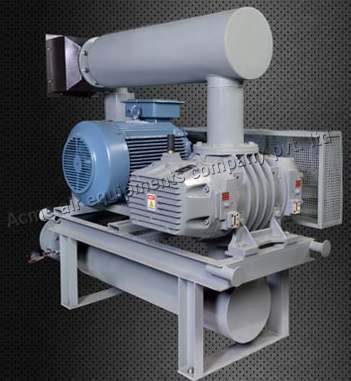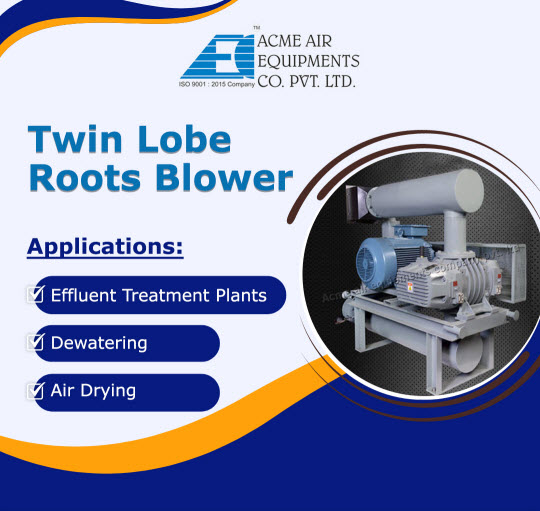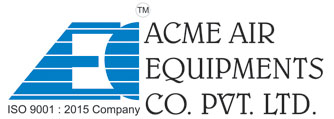Table of Contents
The United States is home to one of the most diversified and expansive industrial sectors in the world, making it a significant market for a wide range of industrial equipment. Among these, Twin Lobe Roots Blowers play a crucial role in enhancing the efficiency of various systems, from HVAC and wastewater management to chemical processing and pneumatic conveying. These blowers, known for their ability to provide consistent airflow at low power consumption, are particularly in demand in key U.S. cities such as New York, Los Angeles, Chicago, Houston, and Detroit. In this article, we will explore the factors driving the demand for Twin Lobe Roots Blowers in these cities and examine the supply landscape across the U.S.
1. Understanding the Role of Twin Lobe Roots Blowers
Before delving into the demand and supply dynamics, it’s essential to understand the core function of Twin Lobe Roots Blowers. These blowers are designed to move air or other gases by trapping them between two rotating lobes. The key advantage of these blowers lies in their ability to deliver a steady flow of air with minimal pulsation, making them ideal for applications requiring constant and reliable airflow. The robustness, low maintenance requirements, and ability to work under pressure have made Twin Lobe Roots Blowers indispensable in many industries.
2. Why Twin Lobe Roots Blowers Are in High Demand in the USA
The Twin Lobe Roots Blower market in the U.S. is driven by several factors, ranging from the increasing demand for energy-efficient equipment to the need for improved air circulation in complex industrial systems. Below are some of the key reasons why these blowers are seeing heightened demand:
1. The U.S. Industrial Landscape: A Significant Driver
The U.S. boasts a highly developed industrial sector, including key industries such as chemical processing, mining, automotive manufacturing, food processing, and wastewater treatment. Each of these industries relies heavily on air management systems, and the need for effective and energy-efficient blowers is critical to their operations. Specifically, Twin Lobe Roots Blowers are often used in:
- Chemical Processing: For controlling airflow and pneumatic conveying in manufacturing plants.
- Mining: For ventilation and gas exhaust systems in mines.
- Food and Beverage: To handle the high volume of air needed for the transport of raw materials and the movement of gases in food production.
- HVAC Systems: For maintaining ventilation, heating, and air-conditioning in large buildings and industrial complexes.
- Wastewater Treatment: To support aeration and improve efficiency in the purification processes.
These industries demand high-performance equipment that can deliver consistent airflow, work under high pressure, and withstand various environmental conditions, making the Twin Lobe Roots Blower a key player.

2. Focus on Energy Efficiency and Sustainability
There is an ongoing drive in the U.S. towards reducing energy consumption and improving environmental sustainability. As energy costs rise, industries are increasingly turning to Twin Lobe Roots Blowers due to their energy-efficient operation. These blowers are designed to optimize airflow with minimal power usage, which helps reduce operational costs. The ability to maintain consistent airflow without requiring excessive energy consumption is one of the primary factors driving their demand in energy-conscious industries.
3. Regulatory Compliance and Environmental Standards
Environmental regulations in the U.S. require companies in industries like chemical manufacturing, wastewater treatment, and mining to adopt solutions that minimize their environmental impact. Twin Lobe Roots Blowers offer compliance with these stringent regulations due to their ability to operate cleanly and efficiently, without emitting harmful pollutants. They play a crucial role in controlling air and gas flow in industrial systems while ensuring compliance with environmental standards.
3. Key Cities Driving the Demand for Twin Lobe Roots Blowers
The demand for Twin Lobe Roots Blowers is especially high in the following U.S. cities, which are hubs for various industrial activities:
1. Twin Lobe Roots Blowers in New York

New York is a global financial center and a city with a diversified industrial base. The demand for Twin Lobe Roots Blowers in New York stems from its dense concentration of commercial buildings, manufacturing plants, and wastewater treatment facilities. As one of the most populous cities in the U.S., New York’s HVAC systems need highly efficient blowers for ventilation, particularly in high-rise buildings. Additionally, the city’s food processing sector, combined with its role as a hub for chemical manufacturing, further fuels the demand for blowers in pneumatic conveying and ventilation applications.
2. Twin Lobe Roots Blowers in Los Angeles
Los Angeles is a significant center for industries such as aerospace, food processing, and entertainment. The city’s vast industrial landscape, including its ports and manufacturing facilities, requires highly efficient airflow solutions. As one of the world’s busiest ports, Los Angeles sees an increased demand for Twin Lobe Roots Blowers in transportation and logistics.
Additionally, industries such as chemical processing, agriculture, and wastewater management all rely heavily on these blowers for their operations. Los Angeles’ commitment to reducing energy consumption and improving air quality also contributes to the demand for energy-efficient blower systems.
3. Twin Lobe Roots Blowers in Chicago
Chicago’s industrial diversity-spanning chemical processing, food production, automotive manufacturing, and HVAC systems-has led to a robust demand for Twin Lobe Roots Blowers. The city’s strategic location in the Midwest, along with its large manufacturing and industrial base, has created an ongoing need for high-efficiency blowers. Chicago’s HVAC systems, in particular, require reliable and energy-efficient equipment for both commercial and industrial buildings. The city’s chemical processing sector also contributes significantly to the demand for blowers to handle air and gas flows in production processes.
4. Twin Lobe Roots Blowers in Houston
Houston, a major hub for the energy, oil, and gas industries, is another city where Twin Lobe Roots Blowers are in high demand. The city’s booming industrial sector, including petrochemical and manufacturing facilities, requires these blowers for optimal air handling and pneumatic conveying in production processes. Furthermore, Houston’s wastewater treatment plants rely on Twin Lobe Roots Blowers for efficient aeration and the movement of gases. The demand in Houston is also driven by the city’s emphasis on environmental sustainability and energy-efficient solutions in various industries.
5. Twin Lobe Roots Blowers in Detroit
Detroit, known as the automotive capital of the U.S., has a significant demand for Twin Lobe Roots Blowers in the manufacturing sector, particularly in automotive production.
The city’s manufacturing plants, assembly lines, and chemical processing facilities require efficient blowers to maintain consistent airflow and optimize pneumatic systems. Detroit’s emphasis on energy-efficient manufacturing processes further drives the need for Twin Lobe Roots Blowers, particularly in industries where precision and high-pressure systems are essential.
4. The Supply Landscape of Twin Lobe Roots Blowers in the USA
The Twin Lobe Roots Blower market in the U.S. is well-developed, with numerous manufacturers, suppliers, and distributors catering to a wide range of industries. Key suppliers offer these blowers with varying capacities, tailored to meet the specific needs of different applications, from low-pressure operations in HVAC systems to high-pressure systems used in chemical processing and mining.
5. Conclusion
The demand for Twin Lobe Roots Blowers in the U.S. is driven by the need for energy-efficient and high-performance airflow solutions in key industrial sectors. As industries across cities like New York, Los Angeles, Chicago, Houston, and Detroit continue to grow and evolve, the reliance on efficient blowers for applications ranging from HVAC and wastewater treatment to chemical processing and food production will only increase. The supply of Twin Lobe Roots Blowers in the U.S. is well-equipped to meet these demands, ensuring that industries can continue to optimize their operations while adhering to energy efficiency and environmental sustainability goals.
Frequently Asked Questions (FAQs) on Twin Lobe Roots Blowers in the USA
Twin Lobe Roots Blowers are primarily used for delivering high-efficiency airflow in various industrial systems. They are crucial in applications like HVAC (heating, ventilation, and air conditioning), pneumatic conveying, wastewater treatment, chemical processing, mining ventilation, and food processing. These blowers offer consistent and reliable airflow, making them essential for industries that require steady air or gas flow under controlled conditions.
The high demand for Twin Lobe Roots Blowers in the USA is driven by the growing need for energy-efficient equipment in industries like HVAC, chemical processing, food production, and wastewater treatment. These blowers help industries reduce energy consumption while improving operational efficiency. Additionally, stringent environmental regulations and the need for reliable, long-lasting airflow solutions are also key factors fueling demand.
Twin Lobe Roots Blowers are designed to operate with minimal energy consumption while providing consistent airflow. Unlike other types of blowers, they are highly efficient, offering better energy savings for industries that require continuous or regulated air or gas flow. This energy efficiency helps reduce operational costs and supports sustainability initiatives in industries that need to comply with environmental regulations.
Key cities driving the demand for Twin Lobe Roots Blowers in the USA include New York, Los Angeles, Chicago, Houston, and Detroit. These cities are industrial hubs with significant operations in manufacturing, chemical processing, HVAC systems, mining, food production, and wastewater treatment, all of which require reliable and energy-efficient blowers.
Several industries in the USA rely on Twin Lobe Roots Blowers, including Chemical Processing, Mining, Food Production, HVAC Systems, and Wastewater Treatment. These industries use Twin Lobe Roots Blowers for their ability to provide reliable and efficient airflow at varying pressures.
In Detroit, known for its automotive industry, Twin Lobe Roots Blowers play a vital role in maintaining optimal airflow during manufacturing and assembly line processes. These blowers help move air through pneumatic systems, ensuring precise operation in high-pressure environments. As the city continues to innovate and improve manufacturing efficiency, the demand for these blowers remains strong.
In HVAC systems, Twin Lobe Roots Blowers provide several benefits:
- Consistent Airflow: They ensure smooth, steady airflow for both heating and cooling applications.
- Energy Efficiency: These blowers consume less power while maintaining effective airflow, reducing energy costs.
- Minimal Maintenance: Twin Lobe Roots Blowers require less maintenance, making them a long-lasting solution in HVAC systems.
- Reduced Noise: Compared to other types of blowers, Twin Lobe Roots Blowers operate quietly, improving indoor air quality.
In wastewater treatment plants, Twin Lobe Roots Blowers are essential for aeration processes. They provide the necessary airflow to oxygenate water, helping to break down organic waste and ensure that water meets environmental standards. These blowers are also used to control gas flow in the plant’s exhaust systems, contributing to the overall efficiency and environmental compliance of the facility.
While the supply of Twin Lobe Roots Blowers in the USA is well-established, there are certain challenges, such as:
- Global Supply Chain Issues: Importing components or finished blowers can be delayed due to international supply chain disruptions.
- High Customization Demand: Many industries require custom configurations of blowers, which can increase production and delivery times.
- Cost Pressures: The demand for high-quality, energy-efficient blowers often comes with higher manufacturing costs, which can lead to price fluctuations.
Despite these challenges, the supply landscape in the U.S. is resilient, with leading manufacturers and distributors continuing to meet the growing demand.
Twin Lobe Roots Blowers contribute significantly to environmental sustainability by reducing energy consumption, which helps industries lower their carbon footprint. Additionally, they ensure that industries comply with stringent environmental regulations by improving air and gas flow control, minimizing pollution, and optimizing overall system efficiency. Their use in energy-intensive sectors like wastewater treatment and chemical processing helps companies meet sustainability goals while maintaining high operational standards.
The demand for Twin Lobe Roots Blowers is particularly high in industrialized regions of the USA, including:
- The Midwest (Detroit, Chicago): Known for heavy manufacturing and automotive industries.
- The Northeast (New York): Features a diversified industrial base, including food processing and chemical industries.
- The Southwest (Houston): A hub for energy, petrochemical, and environmental industries.
- The West Coast (Los Angeles): Known for its aerospace, food processing, and entertainment sectors.
These regions have a high concentration of industries requiring reliable and energy-efficient blowers for various applications.
Yes, Twin Lobe Roots Blowers are widely used in the food and beverage industry for applications such as pneumatic conveying of bulk materials (flour, grains, sugar, etc.), maintaining airflow in packaging systems, and ensuring precise ventilation in food processing plants. Their ability to move large volumes of air without contamination is particularly valuable in food handling and production, where hygiene and air quality are paramount.
Industries should consider several factors when choosing Twin Lobe Roots Blowers:
- Airflow Requirements: The volume of air that needs to be moved.
- Energy Efficiency: How efficiently the blower uses power to minimize operating costs.
- Pressure Requirements: The blower’s ability to handle varying pressures.
- Durability and Maintenance: The lifespan and ease of maintenance of the blower.
- Compliance: Ensuring that the blower meets environmental and safety regulations.
These considerations will help industries select the right blower for their specific needs.
Twin Lobe Roots Blowers contribute to cost reduction by operating with minimal energy consumption while providing consistent and reliable airflow. Their efficiency means less power is required to achieve the desired performance, leading to lower utility bills. Additionally, their durability and low maintenance needs further reduce long-term operating costs for industries across sectors.
Recent innovations in Twin Lobe Roots Blowers include improved energy efficiency, noise reduction technologies, and smart monitoring systems. Manufacturers are also offering custom designs that can better meet the specific needs of industries like HVAC, chemical processing, and food production. These advancements help companies reduce energy consumption and improve system performance while adhering to stricter environmental standards.
About Author

CEO
Mr. Vishwesh Pardeshi is the CEO of Acme Air Equipments Company Pvt. Ltd., an industrial and engineering goods manufacturing company based in Ahmedabad, Gujarat (India). He has taken over the responsibility from founding Partners and Directors of the Company, and is now leading a talented group of professionals since 2020 by bringing in vast industrial and management expertise. By qualification, he holds a Bachelor Degree in Mechanical Engineering and also holds a MBA degree from reputed institutes. Under his leadership, the Company has successfully executed prestigious projects by delivering high quality and world class products from a state of the art manufacturing facility which combines CNC-enabled precision manufacturing and strong after sales support. In line with the Vision, Mission and Core Values of the Organization, Mr. Vishwesh Pardeshi continues to drive Quality, Reliability and Global Expansion at Acme Air Equipments Co. Pvt. Ltd.








